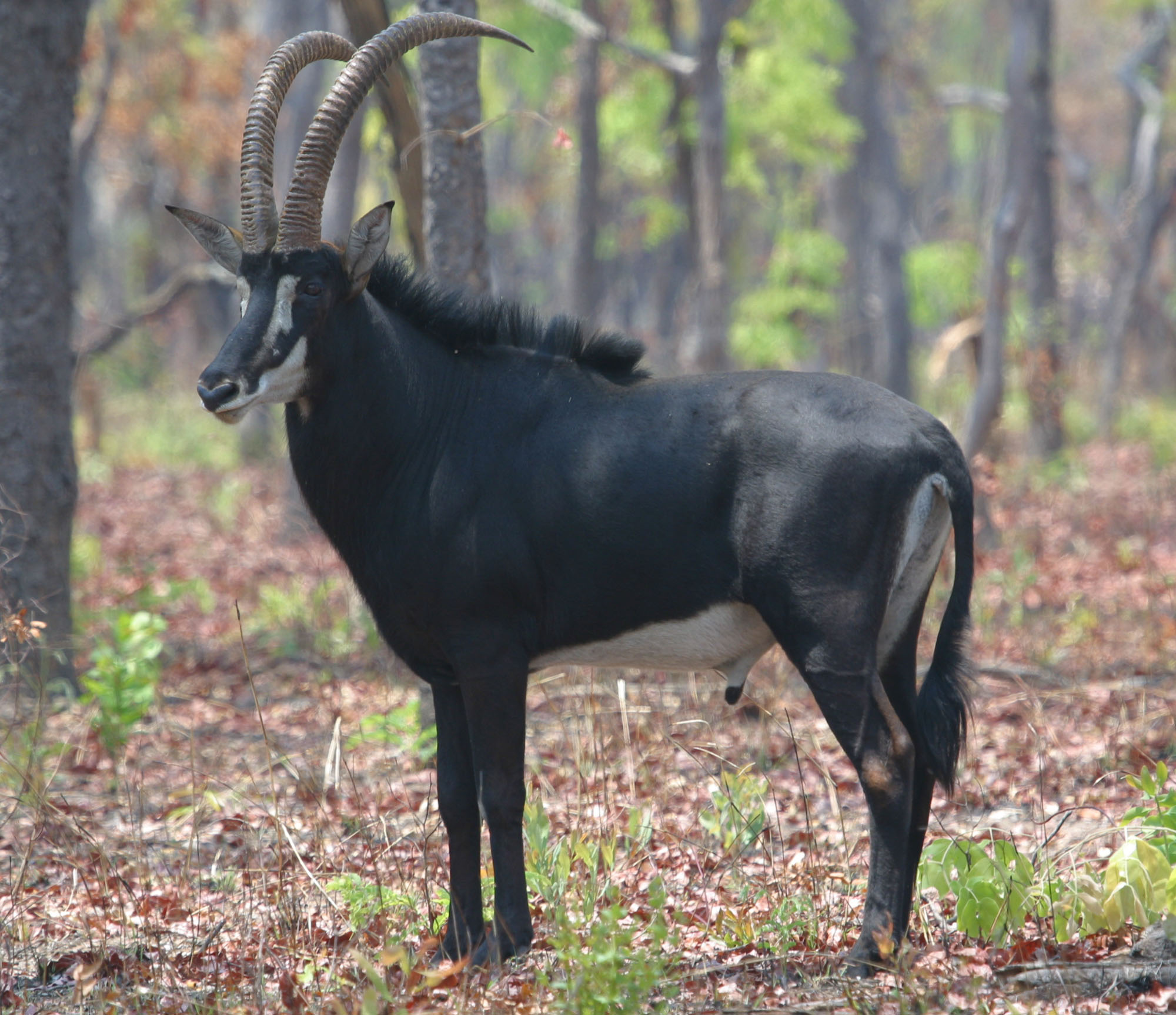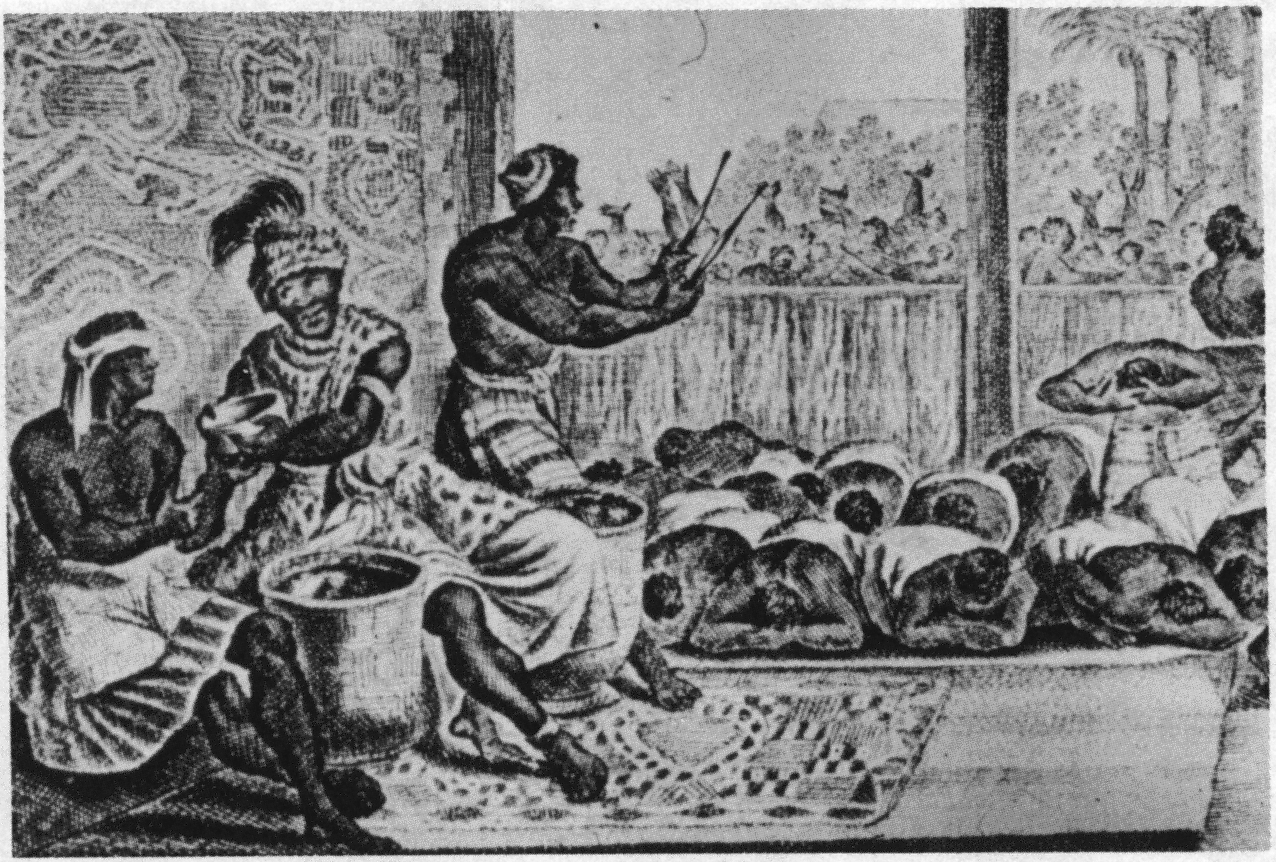|
Peters's Duiker
Peters' duiker (''Cephalophus callipygus'') is a small antelope found in Gabon, Equatorial Guinea, southern Cameroon, and northern Republic of the Congo. Peters' duikers typically weigh about 40 lb (18 kg), and are about 20 in (50 cm) at the shoulder. They have grey-brown coats, and live in dense undergrowth in mountain rainforest Rainforests are forests characterized by a closed and continuous tree Canopy (biology), canopy, moisture-dependent vegetation, the presence of epiphytes and lianas and the absence of wildfire. Rainforests can be generally classified as tropi ...s. The total population is estimated at 380,000 individuals, with a declining trend. References External links Peters' duiker Mammals of Central Africa Mammals of Cameroon Mammals of Equatorial Guinea Mammals of Gabon Mammals of the Republic of the Congo Peters's duiker Peters's duiker {{eventoedungulate-stub ... [...More Info...] [...Related Items...] OR: [Wikipedia] [Google] [Baidu] |
Campo Ma'an National Park
Campo Ma'an National Park is a 2,680 square kilometer National Park in Cameroon, located in the South Region in the Océan division. It borders with Equatorial Guinea on the south, the Atlantic Ocean to its west, the Vallée-du-Ntem and the Mvila to the east. Total area of the park and buffer zone measure approximately 700, 000 hectares. The climate has two dry seasons, November to March and July to August, and two rainy seasons, April to June and August to October. Average temperature is 25°C. History The original Campo Wildlife Reserve (1,582 km2) was established in 1932 as an agreement between the Government of Cameroon and the Campo Forest Company.Owono, J.C. (2001). The extent of Bagyeli Pygmy involvement in the development and Management Plan of the Campo Ma’an UTO. In J. Nelson & L. Hossack (Eds.), ''Indigenous Peoples and Protected Areas in Africa: From Principles to Practice'' (pp. 243-268). Forest Peoples Programme. https://www.forestpeoples.org/sites/fpp/fil ... [...More Info...] [...Related Items...] OR: [Wikipedia] [Google] [Baidu] |
Wilhelm Peters
Wilhelm Karl Hartwich (or Hartwig) Peters (22 April 1815 – 20 April 1883) was a German natural history, naturalist and explorer. He was assistant to the anatomist Johannes Peter Müller and later became curator of the Natural History Museum, Berlin, Berlin Zoological Museum. Encouraged by Müller and the explorer Alexander von Humboldt, Peters travelled to Mozambique via Angola in September 1842, exploring the coastal region and the Zambesi River. He returned to Berlin with an enormous collection of natural history specimens, which he then described in ''Naturwissenschaftliche Reise nach Mossambique... in den Jahren 1842 bis 1848 ausgeführt'' (1852–1882). The work was comprehensive in its coverage, dealing with mammals, birds, reptiles, amphibians, river fish, insects and botany. He replaced Martin Lichtenstein as curator of the museum in 1858, and in the same year he was elected a foreign member of the Royal Swedish Academy of Sciences. In a few years, he greatly increased ... [...More Info...] [...Related Items...] OR: [Wikipedia] [Google] [Baidu] |
Antelope
The term antelope refers to numerous extant or recently extinct species of the ruminant artiodactyl family Bovidae that are indigenous to most of Africa, India, the Middle East, Central Asia, and a small area of Eastern Europe. Antelopes do not form a monophyletic group, as some antelopes are more closely related to other bovid groups, such as bovines, goats, and sheep, than to other antelopes. A stricter grouping, known as the true antelopes, includes only the genera '' Gazella'', '' Nanger'', '' Eudorcas'', and '' Antilope''. One North American mammal, the pronghorn or "pronghorn antelope", is colloquially referred to as the "American antelope", despite the fact that it belongs to a completely different family ( Antilocapridae) than the true Old-World antelopes; pronghorn are the sole extant member of an extinct prehistoric lineage that once included many unique species. Although antelope are sometimes referred to, and easily misidentified as, "deer" ( cervids), true ... [...More Info...] [...Related Items...] OR: [Wikipedia] [Google] [Baidu] |
Gabon
Gabon ( ; ), officially the Gabonese Republic (), is a country on the Atlantic coast of Central Africa, on the equator, bordered by Equatorial Guinea to the northwest, Cameroon to the north, the Republic of the Congo to the east and south, and the Gulf of Guinea to the west. It has an area of and a population of million people. There are coastal plains, mountains (the Crystal Mountains (Africa), Cristal Mountains and the Chaillu Massif in the centre), and a savanna in the east. Libreville is the country's capital and largest city. Gabon's original inhabitants were the African Pygmies, Bambenga. In the 14th century, Bantu expansion, Bantu migrants also began settling in the area. The Kingdom of Orungu was established around 1700. France colonised the region in the late 19th century. Since its independence from France in 1960, Gabon has had four President of Gabon, presidents. In the 1990s, it introduced a multi-party system and a democratic constitution that aimed for a more tr ... [...More Info...] [...Related Items...] OR: [Wikipedia] [Google] [Baidu] |
Equatorial Guinea
Equatorial Guinea, officially the Republic of Equatorial Guinea, is a country on the west coast of Central Africa. It has an area of . Formerly the colony of Spanish Guinea, its post-independence name refers to its location both near the Equator and in the Guinea (region), African region of Guinea. , the country had a population of 1,795,834, over 85% of whom are members of the Fang people, the country's dominant ethnic group. The Bubi people, indigenous to Bioko, are the second largest group at approximately 6.5% of the population. Equatorial Guinea consists of two parts. The mainland region, Río Muni, is bordered by Cameroon to the north and Gabon to the south and east. It has the majority of the population and is the location of Bata, Equatorial Guinea, Bata, Equatorial Guinea's largest city, and Ciudad de la Paz, the country's planned future capital. Río Muni's small offshore islands include Corisco, Elobey Grande, and Elobey Chico. The Islands of Equatorial Guinea, ins ... [...More Info...] [...Related Items...] OR: [Wikipedia] [Google] [Baidu] |
Cameroon
Cameroon, officially the Republic of Cameroon, is a country in Central Africa. It shares boundaries with Nigeria to the west and north, Chad to the northeast, the Central African Republic to the east, and Equatorial Guinea, Gabon, and the Republic of the Congo to the south. Its coastline lies on the Bight of Biafra, part of the Gulf of Guinea, and the Atlantic Ocean. Due to its strategic position at the crossroads between West Africa and Central Africa, it has been categorized as being in both camps. Cameroon's population of nearly 31 million people speak 250 native languages, in addition to the national tongues of English and French, or both. Early inhabitants of the territory included the Sao civilisation around Lake Chad and the Baka people (Cameroon and Gabon), Baka hunter-gatherers in the southeastern rainforest. Portuguese discoveries, Portuguese explorers reached the coast in the 15th century and named the area ''Rio dos Camarões'' (''Shrimp River''), which became ''C ... [...More Info...] [...Related Items...] OR: [Wikipedia] [Google] [Baidu] |
Republic Of The Congo
The Republic of the Congo, also known as Congo-Brazzaville, the Congo Republic or simply the Congo (the last ambiguously also referring to the neighbouring Democratic Republic of the Congo), is a country located on the western coast of Central Africa to the west of the Congo River. It is bordered to the west by Gabon, to the northwest by Cameroon, to the northeast by the Central African Republic, to the southeast by the Democratic Republic of the Congo, to the south by the Angolan exclave of Cabinda Province, Cabinda, and to the southwest by the Atlantic Ocean. The region was dominated by Bantu peoples, Bantu-speaking tribes at least 3,000 years ago, who built trade links leading into the Congo River basin. From the 13th century, the present-day territory was dominated by a confederation led by Vungu which included Kakongo and Ngoyo. Kingdom of Loango, Loango emerged in the 16th century. In the late 19th century France colonised the region and incorporated it into French Equato ... [...More Info...] [...Related Items...] OR: [Wikipedia] [Google] [Baidu] |
Rainforest
Rainforests are forests characterized by a closed and continuous tree Canopy (biology), canopy, moisture-dependent vegetation, the presence of epiphytes and lianas and the absence of wildfire. Rainforests can be generally classified as tropical rainforests or temperate rainforests, but other types have been described. Estimates vary from 40% to 75% of all biotic community, biotic species being Indigenous (ecology), indigenous to the rainforests. There may be many millions of species of plants, insects and microorganisms still undiscovered in tropical rainforests. Tropical rainforests have been called the "jewels of the Earth" and the "medicine chest (idiom), world's largest pharmacy", because over one quarter of natural medicines have been discovered there. Rainforests as well as endemic rainforest species are rapidly disappearing due to #Deforestation, deforestation, the resulting habitat loss and air pollution, pollution of the atmosphere. Definition Rainforests are cha ... [...More Info...] [...Related Items...] OR: [Wikipedia] [Google] [Baidu] |
Duikers
A duiker is a small to medium-sized brown antelope native to sub-Saharan Africa, found in heavily wooded areas. The 22 extant species, including three sometimes considered to be subspecies of the other species, form the subfamily Cephalophinae or the tribe Cephalophini. Taxonomy and phylogeny The tribe Cephalophini (formerly the subfamily Cephalophinae) comprises three genera and 22 species, three of which are sometimes considered to be subspecies of the other species. The three genera include '' Cephalophus'' (15 species and three disputed taxa), '' Philantomba'' (three species), and '' Sylvicapra'' (one species). The subfamily was first described by British zoologist John Edward Gray in 1871 in '' Proceedings of the Zoological Society of London''. The scientific name "Cephalophinae" probably comes from the combination of the New Latin word ''cephal'', meaning head, and the Greek word ''lophos'', meaning crest. The three disputed species in ''Cephalophus'' are Brooke's du ... [...More Info...] [...Related Items...] OR: [Wikipedia] [Google] [Baidu] |
Mammals Of Central Africa
A mammal () is a vertebrate animal of the Class (biology), class Mammalia (). Mammals are characterised by the presence of milk-producing mammary glands for feeding their young, a broad neocortex region of the brain, fur or hair, and three Evolution of mammalian auditory ossicles, middle ear bones. These characteristics distinguish them from reptiles and birds, from which their ancestors Genetic divergence, diverged in the Carboniferous Period over 300 million years ago. Around 6,640 Neontology#Extant taxon, extant species of mammals have been described and divided into 27 Order (biology), orders. The study of mammals is called mammalogy. The largest orders of mammals, by number of species, are the rodents, bats, and eulipotyphlans (including hedgehogs, Mole (animal), moles and shrews). The next three are the primates (including humans, monkeys and lemurs), the Artiodactyl, even-toed ungulates (including pigs, camels, and whales), and the Carnivora (including Felidae, ... [...More Info...] [...Related Items...] OR: [Wikipedia] [Google] [Baidu] |



